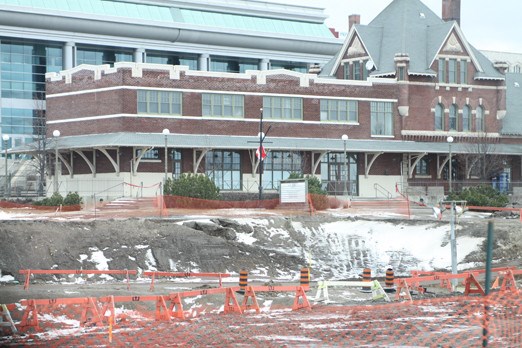City officials on Wednesday confirmed the project is now expected to cost about $57.9 million, about $8 million, or 17.4 per cent, more than the approved $49.3 million budget.
The city’s share of the added costs, about $4 million, will be drawn from money set aside for the scheduled second phase of the waterfront development project. City officials say the second phase, which includes the new marina, should it in fact be built, would now require additional funds from the city. The report cites the Renew Thunder Bay Reserve Fund as a possible source, and adds the city would also need to seek matching funds from other levels of government.
The remainder will come from matching external source funds allocated by the Infrastructure Stimulus Fund and the Northern Ontario Heritage Fund Corporation.
The report, expected to officially be presented to council on Monday, shows the site remediation contract with LTC contracting to have more than doubled, from $976,094 to $2 million; administration professional fees paid to architects Brook McIroy increased by $4.2 million from the original $3.7 million, with an additional contingency of $3.5 million set aside to cover any unforeseen costs through the completion of Phase 1.
The report was prepared by Waterfront Project Manager Katherine Dugmore and summarizes developments at Prince Arthur’s Landing in the last 12 months.
“While the revised budget is within the total funds approved for the overall waterfront development project for both Phase 1 and Phase 2 ($67.2 million), the situation is such that subject to council’s approval, some funds will have to be reallocated from Phase 2 in order to complete Phase 1 as planned,” Dugmore says in the report.
“These reallocated funds will provide the city’s share of the revised budget required to complete the project, and therefore additional tax-supported funds will not be required.”
Dugmore, who is not expected to appear at an afternoon news conference outlining the budget shortfalls, blamed the complexity of the project and the compressed schedule required under the Infrastructure Stimulus Fund, which originally set a March 31, 2011 deadline for majority completion of projects across Canada, for the increased costs.
Instead of sequential projects, many overlapped, but timelines didn’t always work out, she said.
Dugmore added the site itself proved troublesome.
“The site for the project is a former industrial harbour completely constructed on lake infill, much of it rubble and debris from previous demolition,” she said, “creating unique and sometimes unpredictable challenges associated with contamination, site servicing , foundation design and dewatering during construction which results in extra costs to contract.”
Project scope changes also added to the cost, she said.
Phase one, which will include a privately owned and operated hotel and two condominium units, will create 200 jobs during the construction phase and estimates an additional $10 million a year in annual contributions to the city’s tax coffers.
About 145 permanent jobs are expected.
The report also says the project’s private developers, Laureate Developments and the Resolve Group, have promised to name the hotel partnership either later this month or in early March. Construction of the first of two condominium units cannot begin until the hotel construction starts.
